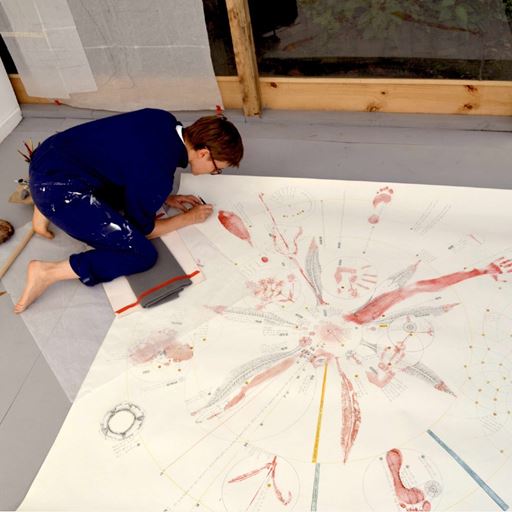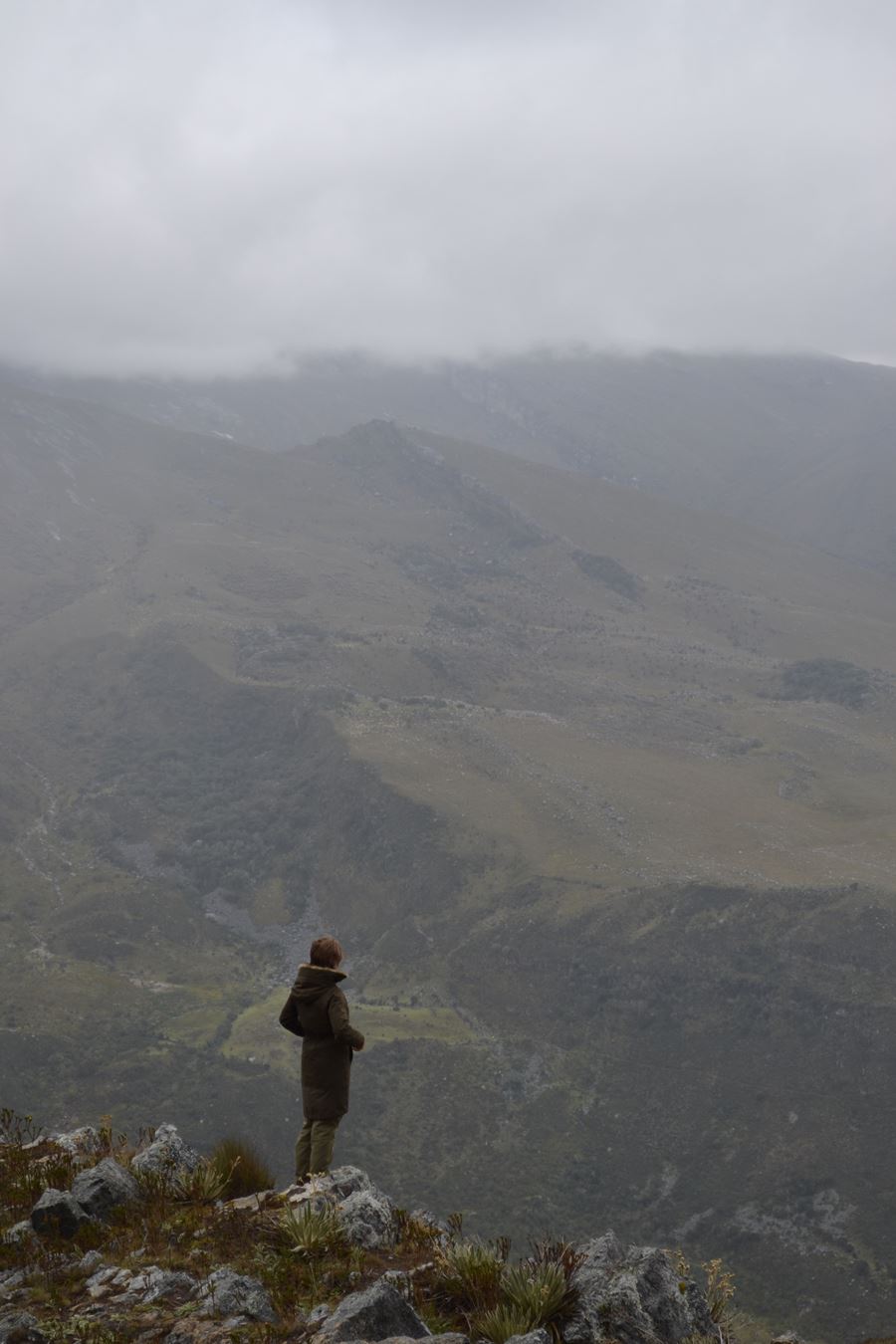Photo: Artist Eulalia De Valdenebro pictured during her fieldwork. Courtesy the artist.
Dr Lisa Blackmore, a Senior Lecturer in Art History and Interdisciplinary Studies curated the Corpus Páramoas exhibition as part of the research project entre-ríos.
It was supported by the Impact Acceleration Fund and showcases works by the Colombian researcher, artist and botanical illustrator Eulalia De Valdenebro.
The exhibition, which opened on Saturday and runs until November 13th, is presented in Villa de Leyva at the Claustro San Agustín, part of Colombia’s leading biological sciences research institute, the Humboldt Institute.
Housing a biodiversity library and museum, the Claustro San Agustín will open its doors to the public for the first time since the pandemic hit.
The exhibition presents drawings, videos, artist notebooks, and delicate illustrations that De Valdenebro has produced over ten years of research in the páramos.
These artworks are placed in dialogue with botanical specimens from the Humboldt Institute and books are available for the public to consult.
With communities and experts from the social and natural sciences the Humboldt Institute has been working to produce policy guidelines on sustainable governance of the páramos.
The exhibition contributes to environmental education to expand awareness about the importance of this delicate ecosystem.
“Art has much to contribute to the dialogue of knowledge that seeks to cultivate more responsible and fair socio-ecological relations in the face of various environmental and climatic emergencies,” said Dr Blackmore.
“Art creates space to gather and foster emotional connections to ecosystems that sustain our lives. It is a powerful way to raise awareness about conservation and the importance of caring for our planet.”
Adding to the collaborative spirit of the exhibition, Dr Blackmore and the artist have edited the book Permeable Bodies: Páramos, Art and Science in Dialogue.
It showcases Eulalia De Valdenebro’s work alongside contributions from researchers at the Humboldt Institute and other academic institutions.
The book is freely accessible, and available in print and digital versions.
Permeable Bodies offers readers approaches to the páramos where social sciences, art, philosophy, law, and biology come into contact to encourage more holistic approaches to environmental issues.
Download the book.


.jpg?mh=500&mw=500&hash=6568B6C9CCF5290A596BEF6678B6AD0E)




